
In the ever-churning maelstrom of modern pop culture, where IP reigns supreme and beloved franchises are constantly exhumed for revivals, reboots, and reimaginings, the concept of a definitive ending has become a quaint, almost mythical notion. We’ve entered an era where the public consciousness is continually tested, grappling with questions of what truly sticks, what fades into obscurity, and whether audiences retain any agency in defining the canon of their most cherished stories. The recent conclusion of “And Just Like That…”, Michael Patrick King’s continuation of “Sex and the City,” offers perhaps one of the most curious and contentious case studies in this ongoing cultural experiment.
Running for three closely-watched seasons, “And Just Like That” sparked consistent conversations and heated debates, never quite reaching the acclaimed heights of its original predecessor. Characters like Carrie, Miranda, and Charlotte saw their fates shift dramatically, new faces joined the fray, and the established vision of New York City expanded—or, depending on your perspective, contorted. Now, with a finale that left many new story threads dangling, the cultural conversation pivots: what, precisely, are we to make of this ambitious, often bewildering, sequel?
As the age of IP continues its relentless march, demanding that we revisit and re-evaluate, “And Just Like That” has solidified its place as a lightning rod. Did it permanently alter our affection for these iconic women, or can it be easily compartmentalized as a misguided, if entertaining, detour? From the show’s abrupt end to its most polarizing creative choices, we take a deep dive into the immediate controversies and character transformations that defined the revival, exploring how its most talked-about elements shaped its reception and ultimately contributed to its complex, divided legacy.
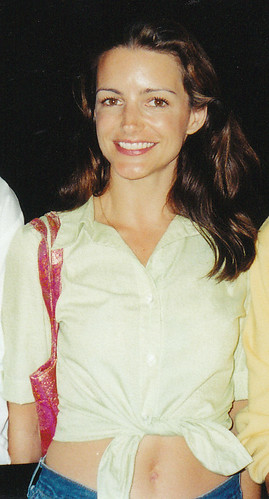
1. **The Controversial Cancellation of ‘And Just Like That…’**
After years of relentless backlash, the much-debated “Sex and the City” reboot, “And Just Like That…”, officially concluded its run, sparking a fresh wave of reactions ranging from relief to profound sadness. The news, confirmed by showrunner Michael Patrick King, signaled the end of a series that, since its 2021 launch, had aimed to reunite Sarah Jessica Parker, Cynthia Nixon, and Kristin Davis with their iconic characters in a contemporary New York setting. Instead of a triumphant return, however, the show often found itself embroiled in controversy.
The announcement of its wrap-up with a two-part finale at the end of its third season came amidst widespread fan outrage. Die-hard devotees of the original franchise had spent years dissecting and critiquing the spin-off, branding it with labels such as “woke,” “awful,” and even “unwatchable.” These criticisms, whether stemming from character developments, new storylines, or perceived departures from the original’s essence, created a tumultuous journey for the revival from its very first episode.
Ultimately, the cessation of “And Just Like That…” after three seasons underscores the challenging tightrope walk that many revivals face. The series, despite its best efforts to update and evolve, continually struggled to appease a fanbase deeply invested in the established narratives and personalities of the original “Sex and the City.” Its cancellation, therefore, became as much a cultural event as its initial premiere, leaving a divided legacy in its wake.
Read more about: Hollywood’s Hidden Demands: 15 Celebrities Exposed for How They Treat Their Household Staff
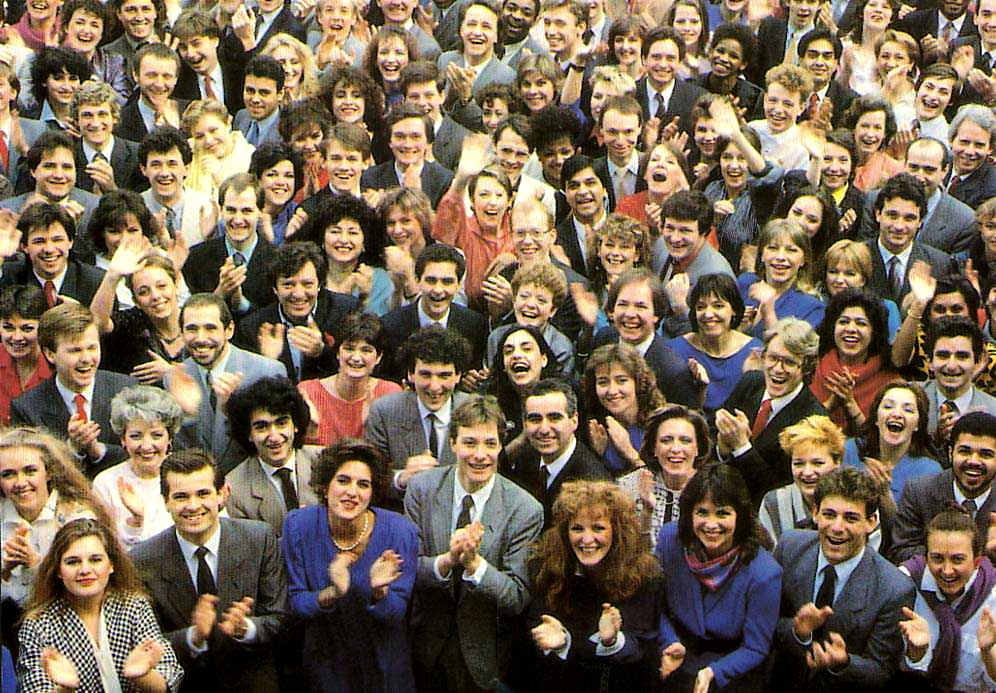
2. **Michael Patrick King’s “Creative Choice” vs. Fan Outrage**
Showrunner Michael Patrick King framed the decision to end “And Just Like That…” as a purely creative choice, asserting that while writing the final episode of Season 3, it became clear it was a “wonderful place to stop.” He maintained that he and Sarah Jessica Parker intentionally delayed announcing the news to prevent the word “final” from overshadowing the enjoyment of watching the season unfold. This perspective suggests a deliberate artistic conclusion, rather than a forced cessation.
However, King’s narrative stands in stark contrast to the prevailing public sentiment, which frequently attributed the show’s demise to overwhelming fan backlash and dwindling viewership. Reports indicated that Season 3’s premiere averaged a paltry 429,000 households, suggesting a significant drop in engagement. Social media platforms, in particular, erupted with reactions when the cancellation broke, with many long-time viewers expressing that the decision was long overdue, echoing the sentiment that the show had “destroyed our beloved characters.”
This divergence highlights the tension inherent in the revival landscape: the creators’ artistic vision versus the audience’s emotional investment. While King emphasized creative autonomy, the public discourse was dominated by expressions of frustration, lamenting the “lazy writing” and “watered-down versions” of characters that fans felt had raised them. This makes the ending of “And Just Like That…” a compelling example of a show grappling with its own legacy under intense scrutiny.
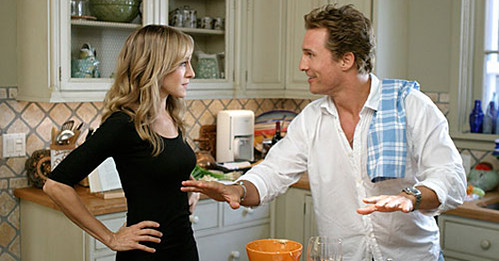
3. **Sarah Jessica Parker’s Farewell to Carrie Bradshaw**
Amidst the news of the show’s ending, Sarah Jessica Parker, who has embodied Carrie Bradshaw for 27 years, offered a heartfelt and poetic farewell to the character through a poignant Instagram post. Her words painted a vivid picture of Carrie’s journey, acknowledging her as a dominant force in her professional life and expressing a deep, abiding love for her creation. Parker’s reflection captured the essence of Carrie’s evolution, celebrating her as a figure who “Crossed Streets Avenues Rubicons,” and “Broke hearts Heels Habits.”
Parker’s statement further elaborated on Carrie’s intricate life, noting how she “Loved Lost Won Tripped Leaped Fell short and into puddles Aged Got wiser.” This acknowledgement of growth, mistakes, and resilience speaks to the complex portrayal that many fans admired in the original series. It also highlights the character’s enduring connection to New York City, a constant thread through all her “Dates Drinks Boyfriends A husband and truly great loves and romances.”
Her message conveyed a profound personal connection, suggesting that while the series may be ending, the spirit of Carrie Bradshaw will forever resonate. This personal touch from Parker, often seen as the face of the franchise, offered a moment of grace and nostalgia amidst the often-harsh criticism leveled at the revival. It served as a reminder of the iconic status Carrie achieved and the indelible mark she left on popular culture.
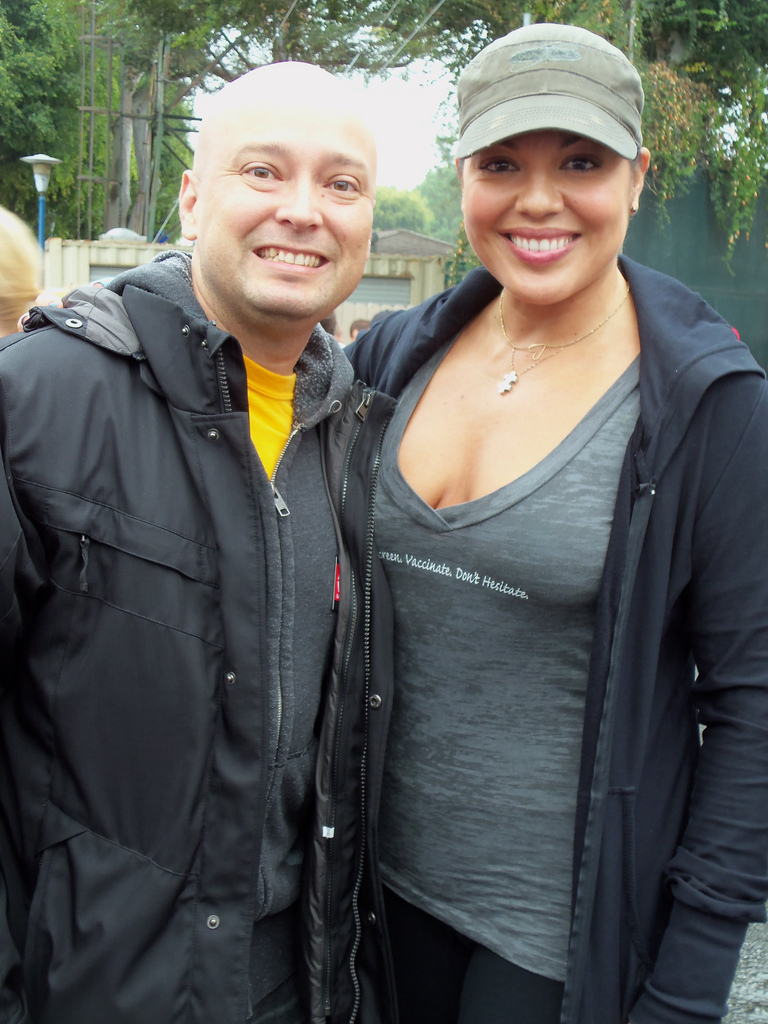
4. **The Divisive Portrayal of Che Diaz**
Perhaps no character in “And Just Like That…” sparked as much vitriol and discussion as Che Diaz, the non-binary podcaster and stand-up comedian portrayed by Sara Ramirez. From the moment they were introduced, Che became a lightning rod for criticism, frequently labeled as “unbelievable,” “cringe-worthy,” and even “offensive.” Many viewers and critics found the character to be a clumsy, often stereotypical, attempt at modern representation, weighed down by what one writer described as a “godawful sitcom plot.”
Che’s on-screen presence, particularly their stand-up comedy and podcast segments featuring a “woke moment” button, drew particular ire. Critics on social media were unsparing, with one seething that “Che Diaz single-handedly set back non-binary representation 70 years,” and another on Reddit calling Che “insufferably woke” and their scenes “entirely unwatchable and cringey.” These reactions suggest a significant disconnect between the show’s intentions for the character and the audience’s reception.
While the writers eventually reduced Che’s role and attempted to tighten other meandering subplots, the damage, for many, was already done. Che’s character became a symbolic casualty of the revival’s perceived missteps, embodying the show’s struggles to integrate contemporary themes with the established narrative in a believable and engaging way. The ongoing debate around Che underscores the challenges of updating beloved characters and universes for a new cultural moment.
Read more about: The Actor’s Playbook: 14 Essential Steps 5 Famous Actors Take to Master Dramatic Roles

5. **Miranda Hobbes’ Character Transformation and Fan Backlash**
One of the most significant and consistently lambasted character transformations in “And Just Like That…” was that of Miranda Hobbes. A fan-favorite known for her sharp wit, cynical pragmatism, and no-nonsense approach in the original series, Miranda’s storyline in the revival saw her grappling with her uality, pursuing a late-in-life romance with Che Diaz, and seemingly abandoning her legal career for a master’s degree. This drastic shift left many viewers feeling that her character had been fundamentally altered, if not “assassinated.”
The awkward and noncommittal nature of Miranda’s romance with Che, combined with what some perceived as a “geriatric sense of techno-confusion,” alienated a significant portion of the audience. The storyline was widely criticized for leaning too heavily on poorly developed stereotypes of a cis white woman discovering her uality, with her depth sacrificed to forward other narratives. The perceived lack of authenticity in her evolution, particularly in contrast to her beloved ex-husband Steve, generated considerable frustration.
For many, Miranda’s new trajectory felt unearned and out of character, transforming her from a relatable, complex woman into a caricature. This disappointment was a recurring theme in fan discussions, with many longing for the return of the Miranda they knew and loved. Her storyline became a central point of contention, symbolizing the revival’s struggles to respectfully evolve its iconic characters.
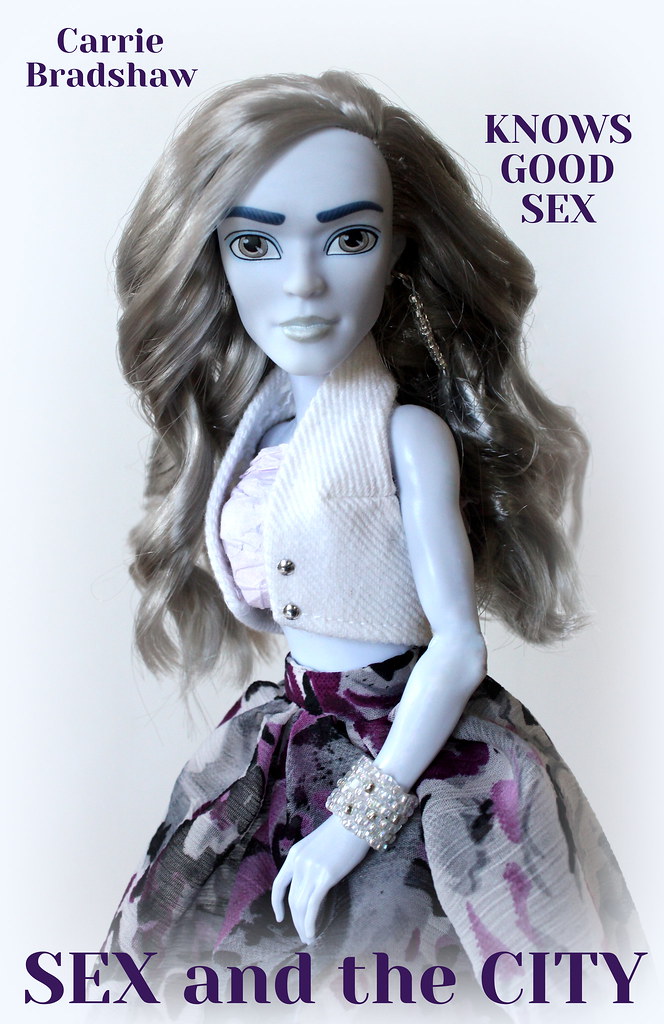
6. **The Return of Aidan Shaw: A Relationship Revisited (and Ruined?)**
The return of Aidan Shaw, Carrie Bradshaw’s affable furniture designer ex-fiancé, was initially seen by some as a potential balm for fans dissatisfied with Big’s untimely death. However, as his arc unfolded, particularly in Season 3, it became one of the most vociferously criticized elements of “And Just Like That….” As one staffer, Wilson Chapman, articulated, while he loved Aidan in the original, his reappearance felt like “pandering,” reviving a relationship that had long been “squeezed of all possible drama.”
Chapman contends that Aidan’s nearly two-season-long arc in the revival didn’t just fall short; it “destroyed both his and Carrie’s characters and swallowed Season 3 whole.” Their renewed relationship was depicted as “toxic, unhealthy, bizarre, rule-ridden, long-distance,” reaching its nadir in the two-episode stretch set in Virginia, which Chapman claims will “haunt my dreams for years.” This portrayal fundamentally altered the nostalgia associated with their original romance, replacing it with discomfort and a sense of narrative contrivance.
The decision to bring Aidan back, and the subsequent direction of his storyline, exemplifies a broader failing in TV revivals: an “over-reliance on prior history that traps the characters in amber, like fossils, rather than the living, breathing human beings we remember.” By dredging up a “specter from the past,” the show, in this instance, proved itself incapable of genuinely moving forward, instead creating a miserable and grueling experience for many viewers.
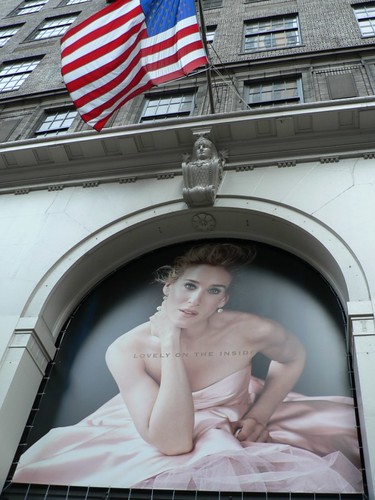
7. **Mr. Big’s Shocking Death and Chris Noth’s Exit**
The premiere episode of “And Just Like That…” delivered one of its most stunning and immediate controversies: the unexpected death of Mr. Big, Carrie Bradshaw’s on-again, off-again love, and eventual husband. Big suffered a heart attack following a Peloton ride, a dramatic plot point that instantly ignited fan outrage across social media platforms like X. This abrupt exit for a character central to Carrie’s narrative for decades set a divisive tone for the entire revival, signaling a bold, albeit polarizing, departure from the past.
The drama surrounding Big’s character intensified off-screen with the allegations of ual assault against actor Chris Noth shortly after the show’s debut. While Noth denied all accusations and was never charged, the public outcry led to his swift removal from any further appearances or mentions in the series. This real-world controversy forced the show to scrub Noth from an already filmed scene, further complicating its narrative and the emotional weight of Big’s legacy within the “Sex and the City” universe.
Big’s death, coupled with Noth’s highly publicized exit, left a gaping void and a challenging narrative hurdle for the revival to overcome. It forced Carrie to navigate widowhood and a new chapter of single life, while also adding an unforeseen layer of real-world baggage to a fictional character. This combination of on-screen shock and off-screen scandal became an unavoidable, defining characteristic of “And Just Like That…’s” tumultuous first season.
In the ongoing cultural experiment of IP revivals, ‘And Just Like That…’ has served as a potent, if often bewildering, case study. Yet, to truly understand its contentious conclusion and the fervent debates it ignited, we must broaden our scope beyond its immediate missteps and confront the broader landscape of the ‘Sex and the City’ universe. The revival, in many ways, acted as a mirror, reflecting not only its own creative struggles but also the long-standing, often unacknowledged, flaws of its beloved predecessor. It forced a critical re-evaluation, exposing elements that, while perhaps groundbreaking at the time, have aged with the grace of a week-old cupcake left out in the rain.
The questions surrounding AJLT’s legacy compel us to interrogate the entire franchise, pushing us to ask what, precisely, we cherished about the original and what we’re now willing to reconsider. Was the magic truly in its flawless execution, or in the rose-tinted nostalgia that has long shielded it from scrutiny? This next chapter of our deep dive will peel back those layers, examining the historical criticisms that the original series largely evaded, unpacking the infamous cast feud that shaped its very existence, and reflecting on how audiences are now grappling with the future of these iconic stories in an age where nothing, it seems, truly ends.
8. **The Original Series’ Unacknowledged Flaws: A Reckoning with Diversity**
The fervent backlash against ‘And Just Like That…’ often focused on its perceived “wokeness” and clumsy attempts at modern representation. However, to truly understand this critique, it’s essential to first acknowledge that the original ‘Sex and the City’ series, while groundbreaking in its own right, was far from perfect. It was a show set in New York City, “one of the most diverse places on Earth,” yet it notoriously “featured an overwhelmingly white cast.” This glaring omission created an aspirational vision that, for all its charm, failed to reflect the vibrant tapestry of the city it purported to celebrate.
When characters of color did appear in the original series, they were, as one critique articulated, “often flat stereotypes or props for the main four—housekeepers, nail techs, or plot devices.” This wasn’t just a lack of representation; it was a misrepresentation, perpetuating clichés rather than exploring genuine diversity. The show’s limited worldview contributed to its “untouchable status” for some, yet simultaneously laid the groundwork for future accusations of being out of touch, a critique that ‘And Just Like That…’ found itself unable to escape.
The revival’s attempts to course-correct this historical oversight, albeit often clumsily, by introducing characters like Che Diaz and expanding the main cast, inadvertently highlighted the original’s blind spots. It forced audiences to confront the uncomfortable truth that a show long held up as a beacon of female empowerment had significant limitations in its embrace of a broader, more inclusive vision of womanhood and city life. This reckoning, rather than simply a ruination, redefined how many now view the entire franchise.
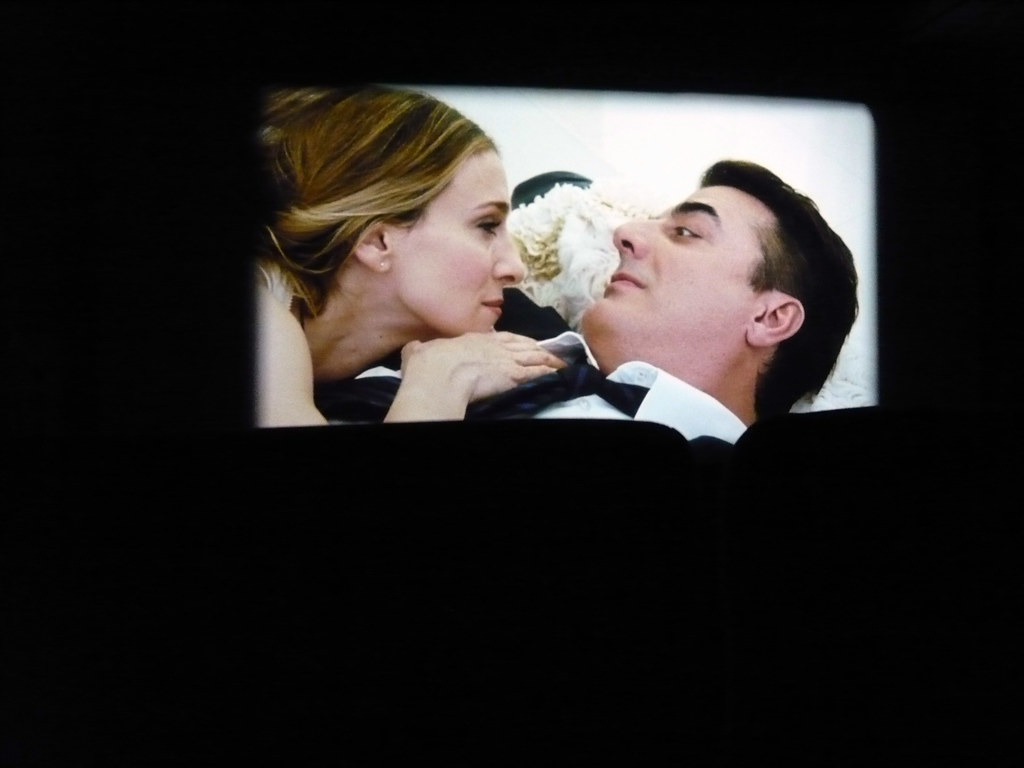
9. **Revisiting ‘Sex and the City’s’ Problematic Social Commentary**
Beyond its lack of racial diversity, the original ‘Sex and the City’ also harbored some deeply problematic social commentary that, in retrospect, reads as jarringly outmoded. The show’s groundbreaking discussions about , while courageous for their time, often fell into traps of judgment and narrow-mindedness, particularly when venturing into queer themes. It presented a world where certain sexual identities were dismissed or caricatured, rather than genuinely explored.
Carrie Bradshaw, for instance, famously “dismissed biuality as ‘just a layover on the way to Gaytown,’” a line that encapsulates the show’s often flippant and reductive approach to identities outside of its heterosexual core. Moreover, a scene involving “transgender sex workers treated them like caricatures,” reducing complex individuals to mere comedic fodder. While ‘Sex and the City’ undeniably “brought queer people into the cultural conversation,” it was “often through the lens of cheap laughs, not lived experience,” failing to offer the empathy and nuance it afforded its main characters.
These instances reveal a crucial tension at the heart of the original series: its desire to be avant-garde and its simultaneous adherence to conventional, often heteronormative, perspectives. ‘And Just Like That…’ attempted to bridge this gap, albeit with mixed results, by integrating non-binary and LGBTQ+ storylines. The very existence of Che Diaz, despite the widespread criticism, was a direct, if awkward, response to these historical oversights, forcing the franchise to finally engage with the very conversations it once sidestepped or trivialized.

10. **The Glamorization of Unhealthy Relationships and Unrealistic Aspirations**
The enduring allure of ‘Sex and the City’ was also built on a foundation of glamorous escapism and aspirational romance, yet even here, hindsight reveals a narrative often more problematic than empowering. The show, which millions adored, frequently glamorized relationships that, under closer inspection, were far from healthy or equitable. It created a dangerous precedent where emotional manipulation and instability were not only tolerated but often framed as passionate and deeply romantic.
Consider the unsettling portrayal of a “male character who secretly films his ual partners,” which was “played off as quirky, not criminal.” Such a narrative choice, devoid of any real consequence or moral reckoning, speaks to a troubling normalization of boundary-violating behavior. More broadly, the show “routinely glamorized emotionally manipulative partners, especially in the case of Carrie and Mr. Big’s so-called romance,” transforming cycles of abandonment and pursuit into the ultimate love story. This dynamic set a questionable standard for what constitutes a desirable partnership, prioritizing drama over genuine connection.
Furthermore, the series painted a “wildly unrealistic portrait of urban single life,” with Carrie Bradshaw notoriously living in a “spacious Manhattan apartment and [buying] designer shoes on a columnist’s salary.” This “aspirational—but wildly unrealistic—portrait of urban single life […] prioritized consumption over authenticity,” fostering a consumerist fantasy that was unattainable for most. Ultimately, while the women talked about ” and career,” the underlying message was that “empowerment was often undercut by an unshakable message that happiness required romance,” funneling complex female ambition back into the narrow channel of securing a man.
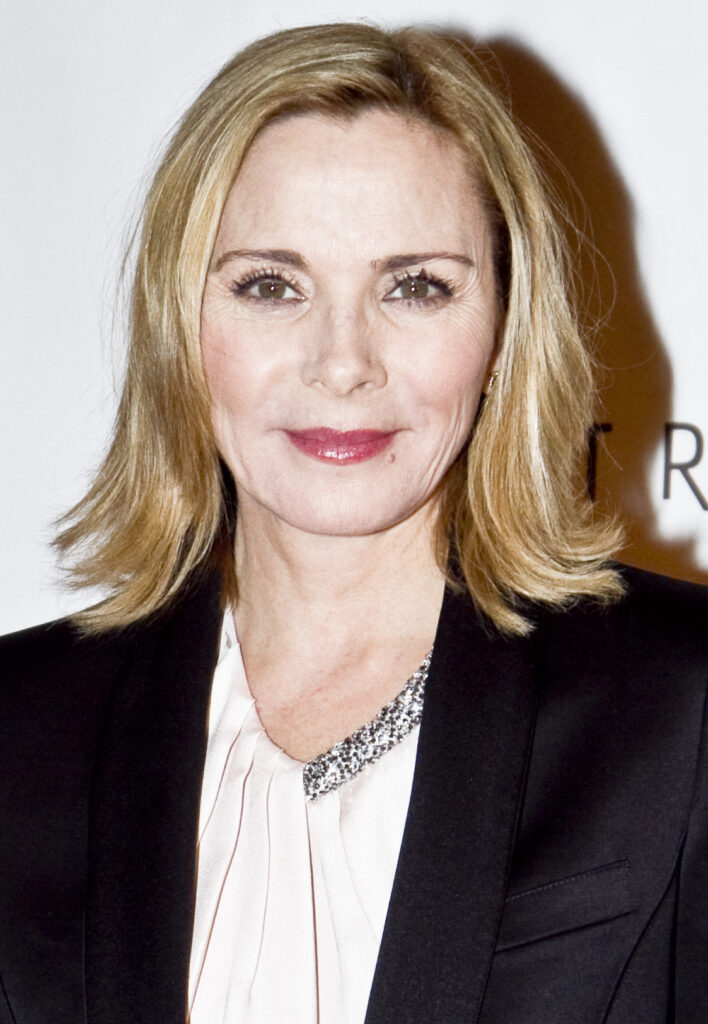
11. **The Infamous Kim Cattrall and Sarah Jessica Parker Feud: A Deep Dive**
Perhaps no off-screen drama has more profoundly shaped the ‘Sex and the City’ franchise and its continuation than the “fairly public feud” between Kim Cattrall (Samantha Jones) and Sarah Jessica Parker (Carrie Bradshaw). This long-simmering conflict, stretching back years, became a defining narrative in itself, ultimately leading to Samantha’s conspicuous absence from ‘And Just Like That…’ and casting a shadow over the entire legacy. It’s a tale of perceived slights, financial disputes, and an irreparable breakdown in professional — and personal — relationships.
The first whispers of tension emerged in 2004, tied to “Kim Cattrall’s desire for a pay increase” for the initial series. This issue resurfaced in 2008, with reports suggesting that other cast and crew members were so incensed by Cattrall’s financial demands that they “wouldn’t even sit with [Cattrall] at mealtimes” during the filming of the first ‘Sex and the City’ movie. This early friction hinted at a deeper discord bubbling beneath the surface of their on-screen camaraderie.
By 2009, a New York Post article explicitly reported that filming for the second ‘Sex and the City’ film was “incredibly uncomfortable due to Parker and Cattrall no longer speaking to one another.” While Cattrall initially refuted these claims in a 2010 interview, suggesting that “People don’t want to believe that we get on,” and it made for “juicy gossip,” her public stance dramatically shifted in later years. The narrative of professional friction was slowly morphing into open animosity, with fans caught in the middle.
The feud escalated dramatically in 2017 when Daily Mail reported that a proposed third ‘Sex and the City’ movie was canceled due to “demands from Cattrall that could not be met.” It was during an interview with Piers Morgan in October 2017 that Cattrall “finally openly admitted that she disliked Sarah Jessica Parker.” In a candid moment, she stated, “I think she could’ve been nicer. I really think she could’ve been nicer. I don’t know what her issue is,” signaling a definitive end to any pretense of collegiality. Parker, in response, expressed being “heartbroken.”
The boiling point was reached in February 2018, following the tragic death of Cattrall’s brother. After Parker posted “love and condolences” on Cattrall’s Instagram, Cattrall publicly lashed out, accusing Parker of “impure intentions.” Her scathing reply, “Your continuous reaching out is a painful reminder of how cruel you really were then and now,” left no room for ambiguity. She concluded with an emphatic, “Let me make this VERY clear. (If I haven’t already) You are not my family. You are not my friend. So I’m writing to tell you one last time to stop exploiting our tragedy in order to restore your ‘nice girl’ persona.” From that raw, public declaration, the path for the franchise was irrevocably altered, moving forward “without Cattrall” and defining a significant aspect of its controversial legacy.

12. **Samantha Jones’ Absence: A Narrative Hole or a Blessing in Disguise?**
The seismic fallout from the Kim Cattrall-Sarah Jessica Parker feud manifested most tangibly in ‘And Just Like That…’ as the complete absence of Samantha Jones. A foundational pillar of the original quartet, Samantha’s unparalleled wit, -positive ethos, and unwavering loyalty made her an undeniable fan favorite. Her departure created a glaring narrative hole that the revival attempted to fill, initially through off-screen texts and a brief, highly anticipated, non-physical cameo that served as both a nod to the past and a stark reminder of what was missing.
For many loyal viewers, a “Samantha-less revival” felt inherently incomplete, a fundamental alteration that undermined the very essence of the show’s famed female friendship. Her larger-than-life presence and her unapologetic embrace of uality were often seen as critical counterpoints to Carrie’s romantic angst, Miranda’s cynicism, and Charlotte’s traditionalism. Without her, the group’s dynamic felt imbalanced, and the specific brand of sexual liberation she embodied was left largely unrepresented, or clumsily so through other characters.
Yet, from a more critical perspective, Samantha’s absence, while undeniably impactful, might also be viewed as an uncomfortable but necessary reckoning. The original Samantha, while groundbreaking, also navigated a landscape of ual politics that has significantly evolved. Her forthrightness could, at times, verge on caricature, and her integration into a contemporary narrative aiming for “woke” updates without Cattrall’s specific comedic timing might have proved equally challenging. The decision not to recast, and instead acknowledge her departure through a textual “move to London,” perhaps protected the character’s legacy from potential missteps.
In a strange way, Samantha’s absence forced ‘And Just Like That…’ to develop new characters and explore different relationship dynamics, albeit with varying degrees of success. It highlighted the show’s attempts to broaden its scope, even as it mourned a cherished figure. Her spectral presence served as a constant reminder of the franchise’s past glories and its present challenges, fueling endless fan speculation about what might have been and underscoring the irreversible changes that time and personal conflicts can inflict upon a beloved IP.

13. **The Age of IP: Picking and Choosing Our Own Canon**
The conclusion of ‘And Just Like That…’ serves as a profound cultural touchstone in what has become the “ever-churning maelstrom of modern pop culture, where IP reigns supreme.” We live in an era saturated with revivals, reboots, and reimaginings, each presenting new chapters to stories we thought were long finished. This relentless exhumation of beloved franchises forces a critical, and often exhausting, question upon audiences: “whether audiences retain any agency in defining the canon of their most cherished stories.” The lines between original intent and continued narrative have blurred, leading to a fascinating, if frustrating, paradigm.
In this landscape, the notion of a “definitive ending has become a quaint, almost mythical notion.” Fans are continually grappling with what truly “sticks” and what “fades into obscurity.” Can a misfire like ‘And Just Like That…’ truly be “easily set aside as a misguided experiment” without impacting our affection for the original characters? The debate over whether “bad or good, lasting or fleeting, what’s the impact of these contorted continuations on fans?” is more pertinent than ever, as our collective cultural memory is constantly being rewritten.
This dynamic has fundamentally shifted the relationship between creators and consumers. Once a story is “out there,” is it “out there for good,” or have “all these story extensions also brought on different standards for pop-culture permanence?” The days of “finding a consensus seem long behind us,” replaced by an era where personal preference dictates what individuals accept as canon. Audiences are increasingly “learning to pick and choose what is and isn’t canon,” asserting their own interpretive authority over narratives they feel have been mishandled or strayed too far from their emotional investment.
This struggle for narrative control speaks to a deeper yearning for ownership over the stories that have shaped us. Can fans “claim their own endings if they’ve already seen an alternate future?” Or are we “all at the mercy of the corporations and creators who keep pushing revivals on us, whether we want them or not?” ‘And Just Like That…’ perfectly encapsulates this tension, a story that dared to rewrite its protagonists’ futures, leaving many to wonder if their beloved characters could ever truly escape the gravitational pull of their pasts.
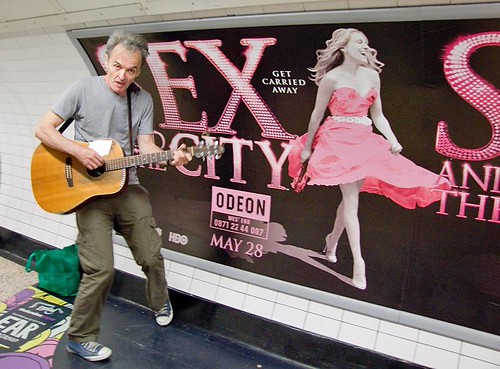
14. **’And Just Like That…’: A Reckoning, Not a Ruination, for a Beloved Franchise*
Ultimately, ‘And Just Like That…’ didn’t just mark the end of a contentious revival; it ignited a broader, essential conversation about the entire ‘Sex and the City’ franchise. As one insightful critique observed, the reboot “didn’t destroy anything. If anything, it peeled back the layers of nostalgia and exposed a simple truth that’s long been ignored: the original Sex and the City hasn’t aged well—and in many ways, never truly earned the untouchable status we gave it.” This perspective reframes the revival’s impact, positioning it less as a destructive force and more as a catalyst for critical re-evaluation.
The series, despite its numerous flaws and fan frustrations, undeniably “attempted to update the franchise, to fill in the blind spots the original ignored.” It made a deliberate effort to incorporate “characters of color,” and explore themes of “gender identity and ual fluidity,” addressing the very criticisms that modern audiences now levy against the original. While these attempts were often met with the accusation of “clumsily rewriting beloved characters and delivering storylines that often felt more like homework than entertainment,” they represented an earnest, if imperfect, acknowledgment that the cultural landscape had shifted dramatically.
In essence, ‘And Just Like That…’ “wasn’t a disaster—it was a reckoning.” It dared to hold “up a mirror to the franchise’s past and forced audiences to confront the question: Did we love these women for who they were—or for who we needed them to be at the time?” The revival, by pushing familiar characters into unfamiliar, sometimes uncomfortable, contemporary narratives, challenged the cherished, idealized versions many held in their minds. It forced a moment of collective growth, signaling that “And just like that… we grew up.”
So, as the final credits roll on ‘And Just Like That…’, the saga of Carrie, Miranda, and Charlotte continues to resonate, not just as a cautionary tale of reboots gone awry, but as a compelling testament to the enduring, albeit messy, power of beloved stories. The public conversation it sparked, the debates it fueled, and the critical re-evaluation it necessitated ultimately underscore the franchise’s profound cultural significance. Even when their cutting-edge images no longer quite fit, these women, in all their complicated glory, remain a vital part of the pop culture dialogue, reminding us that even the most cherished icons are subject to the relentless march of time, and the ever-evolving standards of the world they inhabit.




